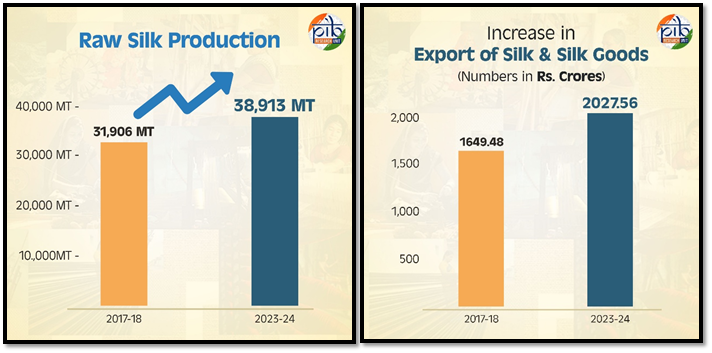7667766266
enquiry@shankarias.in
Prelims – Current events of national and international importance| Economic and Social Development.
Mains (GS III) – Inclusive growth and issues arising from it.
According to the recent data of Ministry of Textiles, India’s silk production and exports have been raised from 2017-18 to 2023-24.
India's total raw silk production increased during the period 2017-24 and Exports of silk and silk goods rose during the period 2017-24.

Initiatives to Silk Development
|
Types of Silk in India |
|